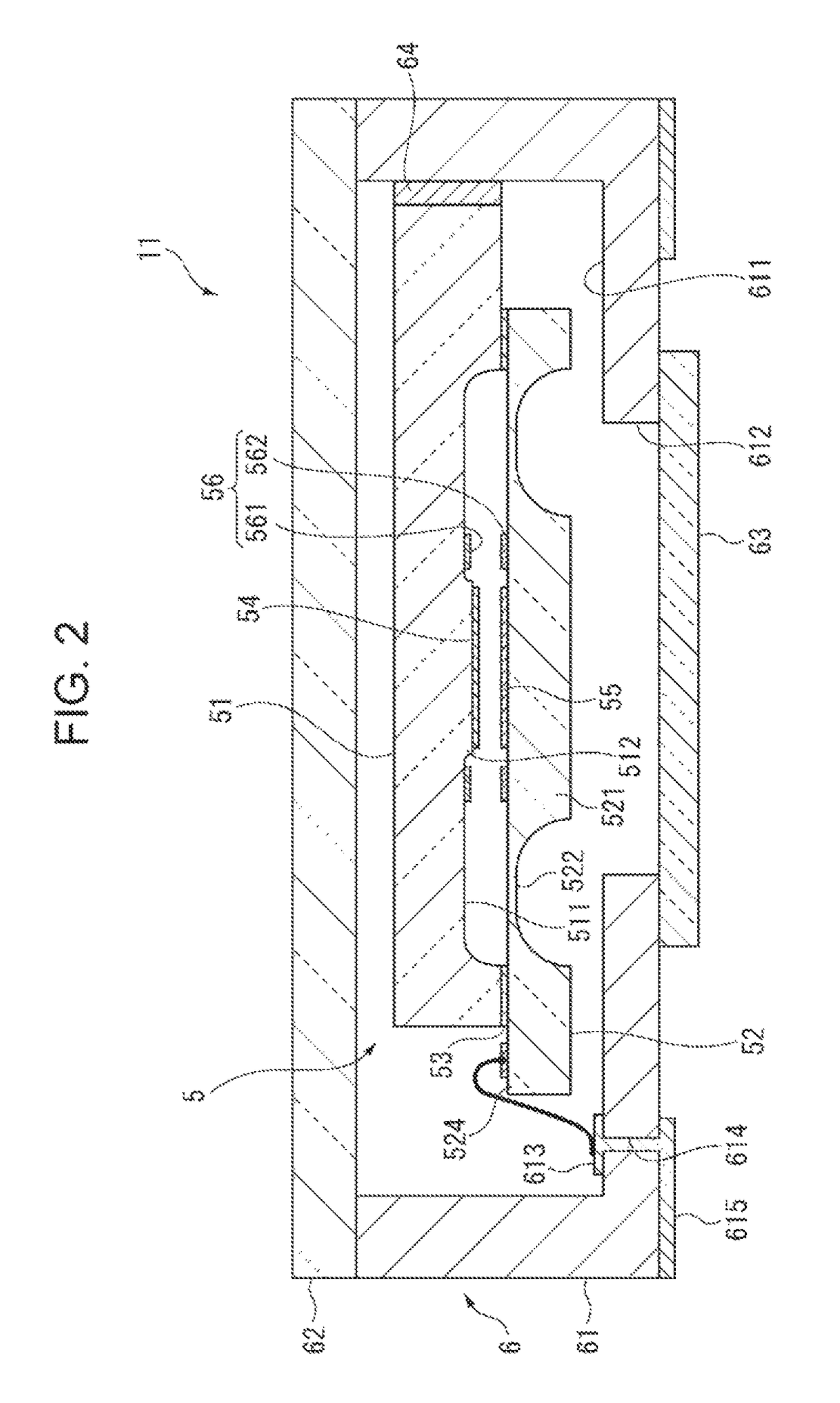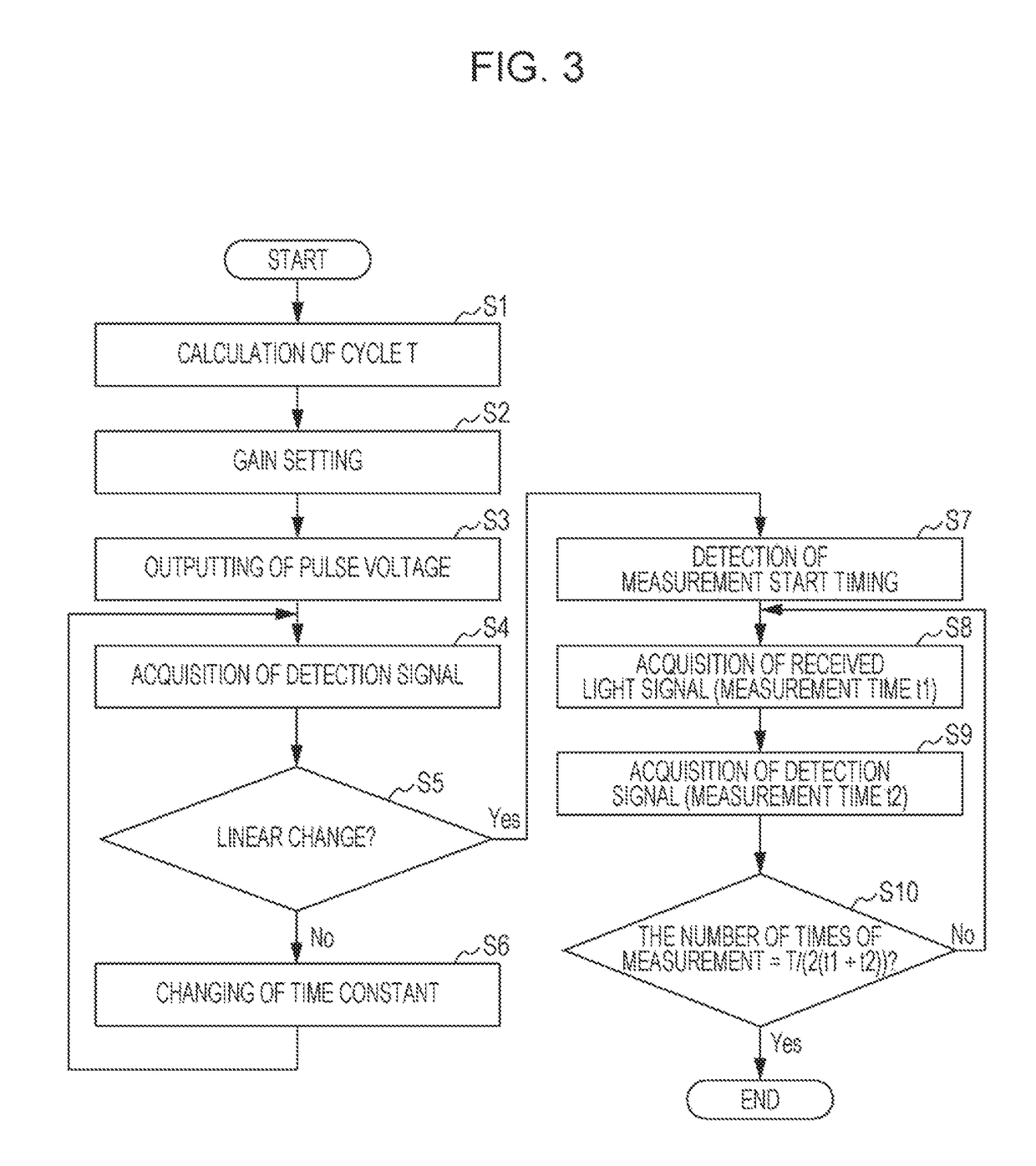Spectroscopic measurement apparatus, driving circuit, and spectroscopic measurement method
a technology of spectroscopic measurement and driving circuit, applied in the direction of optical radiation measurement, instruments, spectrometry/spectrophotometry/monochromators, etc., can solve the problems of long measurement time, steep change of distance between reflection-films, and non-uniform measurement wavelength intervals
- Summary
- Abstract
- Description
- Claims
- Application Information
AI Technical Summary
Benefits of technology
Problems solved by technology
Method used
Image
Examples
first embodiment
[0028]A spectroscopic measurement apparatus according to a first embodiment of the invention will now be explained.
Configuration of Spectroscopic Measurement Apparatus
[0029]FIG. 1 is a block diagram that illustrates the schematic configuration of a spectroscopic measurement apparatus according to an exemplary embodiment of the invention. A spectroscopic measurement apparatus 1 is an apparatus that analyzes the optical intensity of each wavelength of incident light coming in from a measurement target X and measures its spectrum. As illustrated in FIG. 1, the spectroscopic measurement apparatus 1 includes an optical module 10, a light receiver 20, an ADC 30, and a control circuit 40. The optical module 10 includes an optical filter device 11, a driving circuit 12, and a capacitance detection circuit 13. The optical module 10 may further include a light source unit that applies illuminating light to the measurement target X.
Structure of Optical Filter Device
[0030]FIG. 2 is a sectional ...
second embodiment
[0076]Next, a second embodiment of the present invention will now be explained. In the example of the first embodiment described above, a received light signal and a detection signal are acquired at the same time in the sampling cycle. The second embodiment is different from the first embodiment in that the acquisition timing of a received light signal and the acquisition timing of a detection signal are different from each other. A spectroscopic measurement apparatus 1 according to the second embodiment has the same structure as that of the first embodiment illustrated in FIGS. 1 and 2. Therefore, a detailed explanation of each component in the structure is omitted here. FIG. 7 is a flowchart that illustrates a spectroscopic measurement method in the spectroscopic measurement apparatus 1 of the second embodiment.
[0077]In the second embodiment, processing in steps S1 to S6 is performed similarly to that of the first embodiment as illustrated in FIG. 7. In the present embodiment, the...
third embodiment
[0081]Next, a third embodiment of the present invention will now be explained. In the third embodiment, with reference to the accompanying drawings, an example of an electronic device in which the spectroscopic measurement apparatus 1 described above in the first and second embodiments is built will now be explained.
Schematic Structure of Printer
[0082]FIG. 8 is a schematic perspective view of the appearance of a printer 100 according to a third embodiment. FIG. 9 is a block diagram that illustrates the schematic structure of the printer 100 according to the third embodiment. As illustrated in FIG. 8, the printer 100 includes a feeder unit 110, a transportation unit 120, a carriage 130, a carriage movement unit 140, and a control unit 150 (refer to FIG. 9). On the basis of print data inputted from, for example, a personal computer, the printer 100 controls each of the units 110, 120, and 140 and the carriage 130 to print an image on a medium M. The printer 100 of the present embodime...
PUM
 Login to View More
Login to View More Abstract
Description
Claims
Application Information
 Login to View More
Login to View More - R&D
- Intellectual Property
- Life Sciences
- Materials
- Tech Scout
- Unparalleled Data Quality
- Higher Quality Content
- 60% Fewer Hallucinations
Browse by: Latest US Patents, China's latest patents, Technical Efficacy Thesaurus, Application Domain, Technology Topic, Popular Technical Reports.
© 2025 PatSnap. All rights reserved.Legal|Privacy policy|Modern Slavery Act Transparency Statement|Sitemap|About US| Contact US: help@patsnap.com



